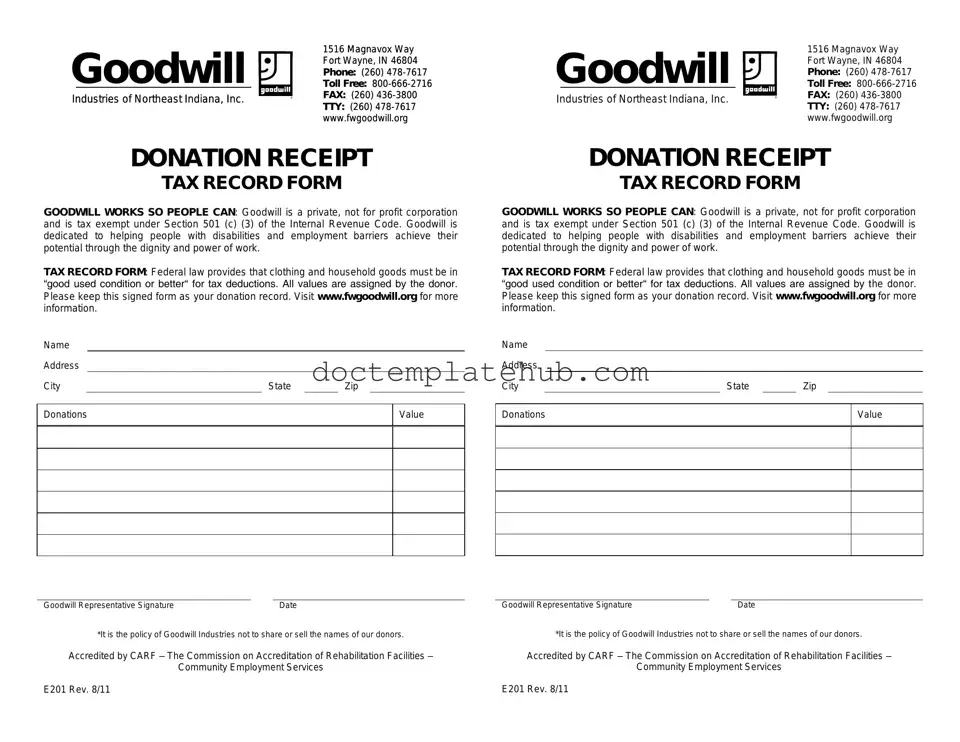What is a Goodwill donation receipt form?
A Goodwill donation receipt form is a document provided to donors when they make a contribution of goods or items to Goodwill Industries. This form serves as proof of the donation and is essential for tax purposes, allowing donors to claim deductions on their income tax returns.
How do I obtain a Goodwill donation receipt?
You can easily obtain a Goodwill donation receipt by asking for one at the time of your donation. When you drop off your items at a Goodwill location, staff members will typically provide you with a receipt. If you forget to ask, don’t worry; you can still request a receipt by contacting the specific Goodwill store where you made your donation.
What information is included on the receipt?
The receipt will generally include the name and address of the Goodwill location, the date of the donation, and a description of the items donated. However, it will not include a specific dollar value for the items. Donors are responsible for determining the fair market value of their contributions.
Can I claim a tax deduction for my donation?
Yes, you can claim a tax deduction for your donation, provided you itemize your deductions on your tax return. The Goodwill receipt is crucial for this process, as it serves as documentation of your charitable contribution. It's important to keep a record of the items you donated and their estimated values to support your deduction.
What if I lost my Goodwill donation receipt?
If you lose your Goodwill donation receipt, you may still be able to claim your deduction, but it could be more complicated. Goodwill does not keep records of individual donations, so it’s best to maintain your own records. Consider taking photos of the items you donate or keeping a written list with estimated values to help substantiate your claim.
Are there limits on how much I can deduct for my donations?
Yes, there are limits on how much you can deduct for charitable contributions. Generally, you can deduct up to 60% of your adjusted gross income (AGI) for cash donations and 30% for donations of property, like clothing or household items. Always consult the IRS guidelines or a tax professional for specific advice tailored to your situation.
What types of items can I donate to Goodwill?
Goodwill accepts a wide variety of items, including clothing, shoes, household goods, electronics, and furniture. However, certain items, such as hazardous materials, large appliances, or items in poor condition, may not be accepted. It’s best to check with your local Goodwill for a complete list of acceptable donations.
